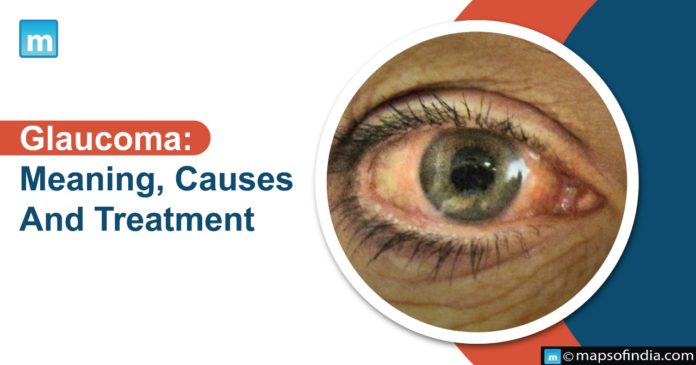A group of eye diseases that causes damage to the optic nerve resulting in vision loss, is called Glaucoma. There are different types of Glaucoma. The most common is open-angle, also known as wide-angle or chronic simple Glaucoma; others are closed-angle, narrow-angle or acute congestive glaucoma and normal-tension glaucoma. Vision loss caused by Glaucoma is permanent. Eyes that are affected by Glaucoma are referred to as glaucomatous.
The development of open-angle Glaucoma takes place slowly over time, and it causes no pain. Peripheral vision may decrease in this type, followed by central vision, resulting in blindness if not treated on time. The presence of closed-angle Glaucoma is gradual or sudden. When a sudden presentation takes place, it may involve blurred vision, severe eye pain, redness in the eyes, mid-dilated pupils, and nausea.
The risk of Glaucoma includes high pressure in the eye, increasing age, family history, and use of steroid medication. There are also times when people have high eye pressure but never develop Glaucoma.
The progression of the disease can be slowed down or stopped with laser treatment, medication, or surgery. The main goal of all these treatments is to decrease eye pressure. Glaucoma occurs more among people of older age, and closed Glaucoma is commonly found in women. As Glaucoma causes loss of vision slowly over some time, it is referred to as a “silent thief of sight”.
What causes Glaucoma?
The optic nerve sends visual information from the eyes to the brain, which later creates good vision. Though high pressure is the main reason the optic nerve gets damaged, people with normal eye pressure also develop this issue. Glaucoma can occur at any age, but it is mainly seen in older people. Glaucoma has no warning signs and is a gradual process that is noticed in its later stages.
The most critical risk factor for Glaucoma is ocular hypertension which means increased pressure within the eye. With increased eye pressure, the optic nerves get damaged, resulting in blind spots in the vision. The risk factor for Glaucoma also increases when there is any positive family history related to it. Primary open-angle Glaucoma has a chance of occurring in people who have a sibling with Glaucoma. It is seen that mainly primary open-angle Glaucoma is associated with gene mutations.
Secondary Glaucoma is caused by prolonged use of steroids; different conditions restrict blood flow to the eye, such as central retinal vein occlusion and severe diabetic retinopathy.
How is Glaucoma treated?
The main goal of glaucoma management is to avoid nerve and glaucomatous damage and provide quality of life for patients with minimal side effects.
Different ways of treating Glaucoma
Medication: Eye drops are used to treat Glaucoma, by which intraocular pressure can be lowered.
Lacer: Argon laser trabeculoplasty (ALT) is a temporary solution for treating open-angle Glaucoma.
Surgery: Conventional surgeries and lacer are performed to treat Glaucoma.




